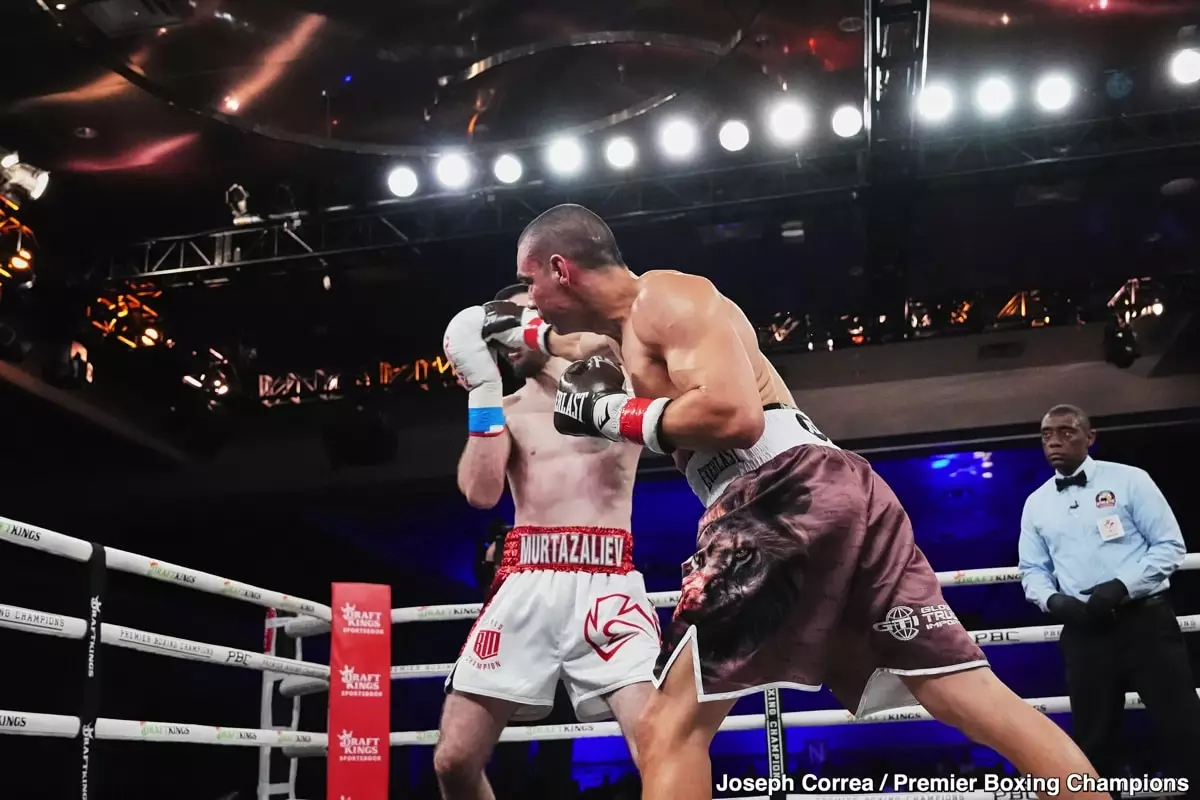Tim Tszyu’s recent bout against Bakhram Murtazaliev ended in a dramatic third-round knockout, plunging the Australian boxer’s career into a state of crisis. This match, held in Orlando, has raised serious questions about Tszyu’s future in the sport. Such a defeat is not merely a setback; it brings forth concerns about his fighting style, readiness for the competition, and ability to reclaim a spot in title contention. Keith Thurman, a well-respected figure in boxing circles, has expressed poignant reflections on Tszyu’s state, describing him as “broken and distraught.”
The mental and emotional toll of consecutive losses can’t be overstated, especially for an athlete who was once considered a rising star in the junior middleweight division. Tszyu’s record, now standing at 24-2 with 17 knockouts, suggests he has the tenacity to bounce back. However, bouncing back requires more than just willpower; it demands a strategic reevaluation of his techniques, defense mechanisms, and approach to the sport. With Tszyu approaching his thirtieth birthday, the pressure mounts. He must evolve without losing the essence of his fighting style if he hopes to penetrate the upper echelons of boxing once more.
Thurman further suggests that a return to Australia may provide Tszyu with an opportunity to rebuild his confidence. Engaging in one or two lighter fights seems a plausible pathway, but merely winning against low-caliber opponents may not serve as effective preparation for the demanding American boxing scene. Thurman aptly indicates the essential need for Tszyu to work on his defenses while enhancing his punch output. However, the question arises: can Tszyu successfully modify his fighting style at this stage in his career?
Historically, fighters develop signatures to their style, and drastic changes can often lead to confusion in strategy and execution, particularly under the pressure of high-stakes matches. Tszyu has predominantly engaged in a particular type of fighting that might not lend itself well to radical changes. Constantly competing at a high level, particularly in the U.S. boxing scene, can magnify the pitfalls of ineffective adaptation. As boxing is not just a test of strength and stamina but also a mental game, second-guessing one’s technique could compound loss and insecurity.
The Future of Murtazaliev and Tszyu’s Inability to Compete
The aftermath of Tszyu’s defeat extends beyond his personal journey; it also raises questions about Bakhram Murtazaliev. Thurman speculates on Murtazaliev’s position, stating that he is likely to be dodged by other top fighters despite defeating Tszyu. It’s a paradox: a champion can often find themselves avoided rather than revered. With the likes of Terence Crawford and other top middleweights reluctant to engage, Murtazaliev’s status becomes complicated. The dynamics of rivalry in boxing often lead to situations where fighters are uncomfortable facing opponents who present formidable challenges.
Thurman highlights potential future fights for Murtazaliev, like those against fighters like Fundora or Jermell Charlo, but questions linger about his ability to secure bouts with prominent contenders. The intrinsic nature of boxing ensures that fighters weigh risks heavily against potential rewards, and Murtazaliev, despite a significant victory, might find struggle in attracting the elite competition that would elevate his status further.
The aftermath of Tszyu’s defeat has ramifications extending beyond individual careers. Both fighters contribute to a current state in the junior middleweight division where fresh talent must be honed under high-pressure circumstances. Tszyu’s journey underscores the importance of resilience in facing setbacks and understanding the interpretative nature of a fighter’s development process.
Ultimately, the journey continues for Tszyu, Murtazaliev, and potential competitors. Tszyu must find a way to regain his footing while embracing the lessons from his experiences, approaching the boxing ring with renewed purpose and strategy. The challenges of adapting a fighting style and reclaiming confidence in a competitive landscape serve as critical hallmarks of his impending career decisions. The landscape of boxing is harsh, but the potential for comeback narratives remains alive, offering hope for all who endure both victories and defeats.

